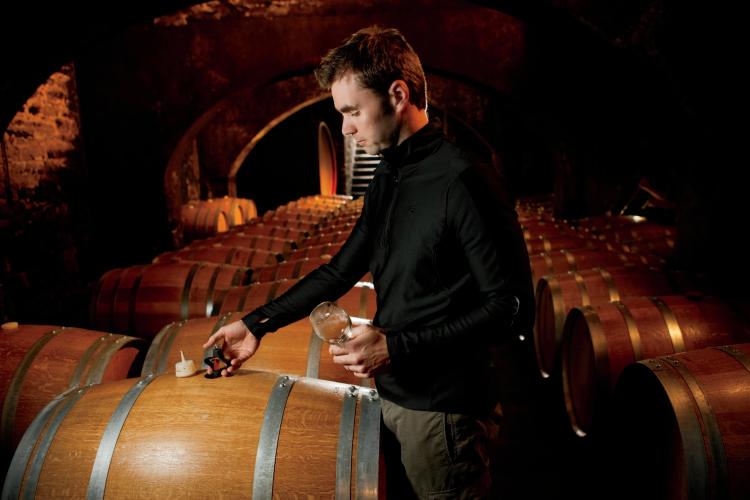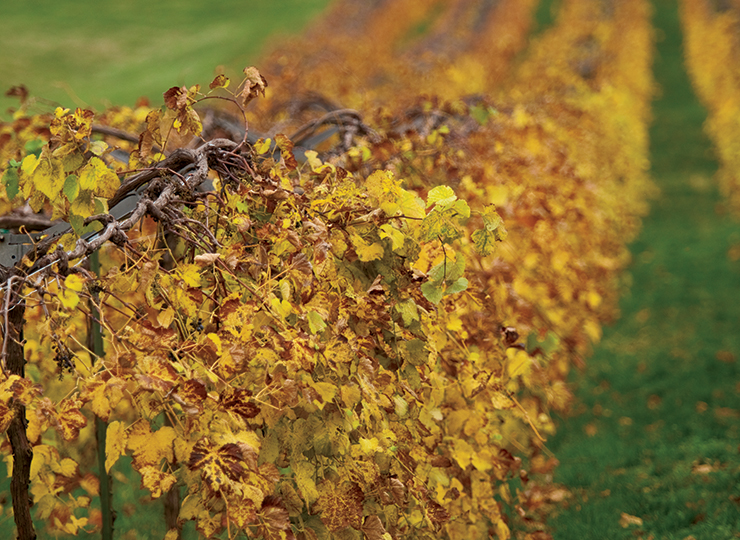Home > Missouri > Missouri Agritourism > Raise Your Glass to Missouri Wine
Raise Your Glass to Missouri Wine

Just like the complex and distinctive varieties it produces, Missouri’s wine industry has only gotten better with age.
Today, Missouri is home to more than 120 wineries as well as grapes and vintners behind internationally acclaimed red and white wines. The rich history of Missouri wine dates back to the 1840s, when German immigrants began growing grapes around the small town of Hermann. The Italians and French followed suit in St. James and St. Genevieve, building the foundation for great vineyards and wines.
International Connections
“Missouri has a diverse history with the different ethnic groups of the French, Germans and Italians. It gives our wines character,” says Jim Anderson, executive director of the Missouri Wine and Grape Board. “It was the Germans who first brought our state grape, the Norton, to Missouri.”
In the late 1800s, Missouri helped save the French wine industry when a dangerous vineyard pest, the phylloxera louse, destroyed enormous tracts of French vineyards. Missouri State Entomologist, C.V. Riley, discovered that American rootstocks were resistant to the pest and sent them overseas to be grafted with French vine cuttings.
With the state’s help, the French industry was back on its feet. Missouri’s industry faced its own challenges a few decades later. Wine production took a turn for the worse and declined rapidly when Prohibition hit in 1920.
Afterward, many agriculturalists turned to different crops and livestock. It wasn’t until the 1960s that Missouri’s wine industry was reborn, with families restoring historic vineyards and planting grapes.
The state’s oldest winery, Stone Hill Winery in Hermann, is one of those that made it through the decades. Founded in 1847, it was re-opened in 1965 by the Held family, who still manage it today. From original structures to a vineyard restaurant that serves German cuisine, the winery’s history combined with a goal to make the highest-quality wine possible sets Stone Hill apart, says Jon Held, vice president and general manager.

Focus on Agritourism
Stone Hill is extremely popular with both visitors and locals, and proudly displays its historic heritage with beautiful underground stone production cellars. Tours of the cellars, the largest series of underground cellars in North America, are very popular.
Tours, tastings and other experiences help Missouri’s wineries serve as a major agritourism pull. Other tourism-based businesses, including restaurants, bed-and-breakfasts, and outdoor recreation spots, have started working with wineries to create appealing destinations for guests with varied interests.
“It’s a fun getaway right in your backyard,” says Held, explaining that people enjoy being able to visit where their wine comes from, see it being made and taste it. “I think people have a loyalty to their own state when it comes to food.” Peter Hofherr of St. James Winery agrees. CEO of the state’s largest winery, Hofherr says wineries bring agriculture and hospitality together and create an environment that goes beyond the wine.
“The wine industry is very good at working together, both at the state and regional level,” Hofherr says. “There is also a strong influence from family businesses here, which puts a different flavor on the whole thing. There is long-term commitment with a family business.”
Those variables, along with help from the Missouri Wine and Grape Board and the Missouri Department of Agriculture, are crucial to building the future of the wine industry.

Popular Varieties
St. James differs somewhat from Stone Hill Winery, because St. James has a strong Italian influence, rather than Stone Hill’s German roots, however the Norton variety is widely popular at both wineries.
The extremely disease-resistant Norton grape produces a red wine that lends itself to many different flavor profiles. Hofherr says St. James has five different Norton vineyards, all of which are distinctly different because of the soil and microclimates.
“It’s like an exciting little puzzle figuring out what the flavor profile will be,” he says.
Other unique grape varieties found in the state include the Vignoles, a versatile white grape that has a sweet, fruity flavor, and Chardonel, a hybrid of the Chardonnay and Seyval grapes that produces a full-bodied wine.
Those unique flavors are an opportunity Missouri’s wine industry is working to share with the world. Though they’re not quite immersed in the international market, Jim Anderson says the Missouri Wine and Grape Board, the state Department of Agriculture, and others are interested in exporting Missouri wines, specifically to Asia.
“It’s been a challenge,” Anderson says. “It will definitely be a learning experience.”
While expanding the international attention paid to Missouri wines may take some more time, vintners in the state continue to develop outstanding vintages. Last year, wines from St. James Winery and Stone Hill were favorites in statewide and international competition, as were bottles from many of the state’s smaller wineries.
As for future growth, Missouri’s flourishing wine industry has nothing to worry about here at home.
“It makes more sense to concentrate on the Midwest,” Held says. “People appreciate regional cuisines and love that it’s grown in their backyard.”



